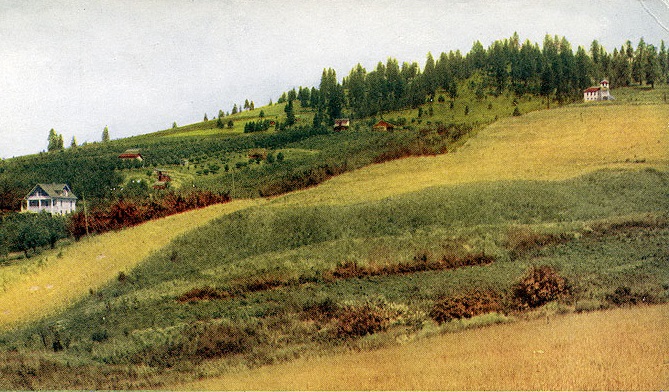
Bloggers note: This blog is one in a series about lead arsenate and its historic use on orchard lands in Central Washington. We are engaging a working group to help us to address this legacy pesticide, especially when those lands transition to new uses like housing developments, schools, and business ventures.
A bit of backstory
The pesticide lead arsenate was used nationwide on orchards. Recommended by the USDA to kill coddling moth on apples, it was widely used throughout Central Washington until the mid-20th century. Unfortunately, lead arsenate breaks down into lead and arsenic in the soil and doesn’t go away over time. Hundreds of thousands of acres of former orchard lands across Central Washington contain varying levels of lead and arsenic contamination. And in many of these cases, the contamination exceeds the cleanup standards of Washington’s environmental cleanup law.
As more and more former orchards are being converted to residential homes, it became clear we needed a new way to handle this issue — especially given the impacts on different community sectors.
We’ve been working hard to address these legacy pesticides. We convened the Legacy Pesticide Working Group earlier this year. Our goal with the working group is to create a process that focuses on proactive ideas, practical implementation, and cost-effective solutions. The working group has had excellent support from the Triangle Associates facilitators and the technical advisor, Maul Foster & Alongi.
You can read more about the Legacy Pesticides Working Group, our efforts, and the origins of legacy contamination in our earlier blogs.
Logistics & timeline for the working group
The working group met five times and the four focus groups have each met four times. You can find agendas and minutes on our Legacy Pesticides Working Group webpage. The group is set to conclude their efforts by the end of this year.
“We’re really pleased that folks remained engaged in these unusual times,” said Valerie Bound, Central Region Section Manager with Ecology’s Toxics Cleanup Program. “We know having buy-in from stakeholders will be the best way to practically implement any solutions and changes.”
In the upcoming December meeting, working group members will review a draft approach for managing legacy pesticides and agree on final recommendations for Ecology.
The result will be a collective set of process changes and new strategies for addressing lead and arsenic contamination in Central Washington. Recommendations will include plans for public education and outreach, changes to community planning in counties and cities, and suggestions for notifications to prospective homebuyers and developers relating to legacy pesticides.
Background and Research Assessment Report on Legacy Pesticides
In September, working group members reviewed a report summarizing issues and concerns they raised during their first few meetings. Led by consultant Maul Foster & Alongi, the report addresses community concerns, the nature of risk associated with legacy lead and arsenic contamination, potential impacts to public health, exposure pathways, blood screening levels and assessments, state regulations, soil sampling and mapping, sampling considerations, case studies from across the country, and general mitigation strategies.
Next steps
As the working group wraps up, we’re moving into implementation planning for 2021 and beyond. Internal approvals and discussions will build on the final report provided by the working group and Maul Foster & Alongi, and we will create an annual plan for public education and outreach. Much of the public outreach will be conducted online until conditions allow in-person presentations and meetings. We’ll be creating a listserv to alert the public about these opportunities to learn.
We have many years of lessons learned from cleanup of brownfield properties across the state. Brownfields are historically contaminated properties that are tested, cleaned up, and redeveloped to support economic revitalization. Similar to our work with brownfields, we believe that lead and arsenic soil contamination is manageable. We will help to make sure cleanup and development can go hand-in-hand, with reasonable, practical processes. And we believe these cleaned up properties will increase in value the same way as brownfield sites as they become highly desirable development areas.
We look forward to the outcomes of this process and believe the recommendations of this group will achieve just that.
Want more information?
- Learn more about protecting yourself and your family on our Dirt Alert webpage.
- Stay up-to-date on Legacy Pesticide Working Group materials, discussions, and background materials by visiting the Legacy Pesticide Working Group webpage.
- Find out more about historic orchard cleanup efforts on our Former Orchard Lands webpage.
- Learn more about our school and park cleanup efforts on our School Park Cleanup page.

